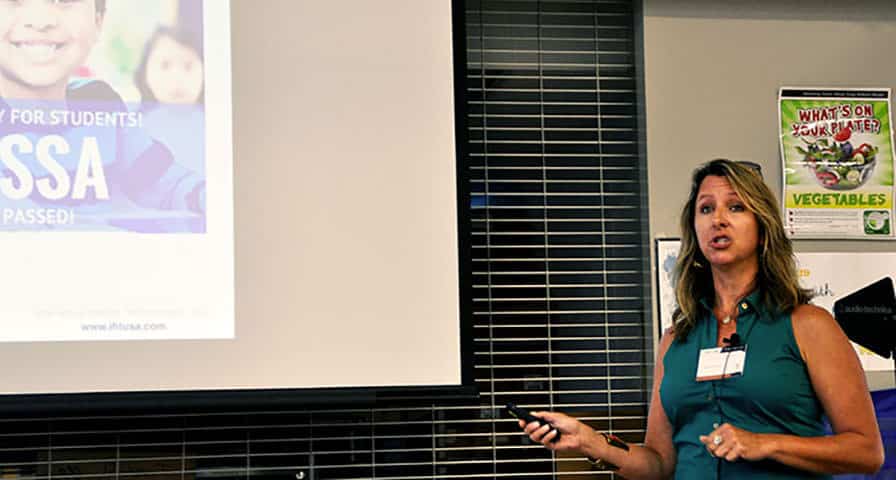Aug. 3, 2016
Physical Education teachers and administrators across the country rejoiced when President Obama signed the Every Student Succeeds Act into law last December.
ESSA replaces the 2001 No Child Left Behind Act, which focused primarily on improving student proficiency in math and reading. As a result, schools struggled to fund and emphasize other areas of education including physical education, art and music, as detailed in this 2005 report, and another from 2013.
In replacing NCLB, ESSA now includes those classes as part of a “well-rounded education.” ESSA opens doors for impoverished districts to acquire tools to meet their needs, but those districts must follow necessary guidelines to receive funding.
At IHT’s Advisory and Innovation Summit last month, The Champion Initiative’s Kathleen Satterley stressed that teachers and administrators must become more diligent in requesting additional money for PE.

“ESSA does not mandate [schools spend more on] physical education,” Satterley explained. “We still need to push for more time in physical education.”
Be first in line
ESSA could make nearly $16 billion available to schools based on several criteria when it takes effect in 2017. This marks a substantial increase in available funding. Different from PEP Grants, which funded PE specifically, ESSA can fund any educational program that fits within its three titles (below).
“It’s a lot of money,” Satterley said, “but remember, music teachers want some of that money, too. Everyone wants their piece of the pie. It will depend on who is willing to go to the table and ask for it.”
Satterley’s advice: act quickly. ESSA goes into effect for the 2017-18 school year, but schools should plan now. “Local school districts must create a plan this year and submit it to the state.”
The three titles of ESSA
Title 1 provides funding to schools with high levels of low-income families. Early budget projections could allocate $15 billion for Title 1.
Title 2 ($469 million proposed) provides funding “for professional development of principals, teachers and school employees.”
Title 4 ($1 billion proposed) provides funds for well-rounded programs, healthy schools and the effective use of technology. Spending limits exist depending on how much money a school receives.
Schools that receive more than $30,000 must:
- Spend no more than 15 percent on technology;
- Spend at least 20 percent on “activities supporting a well-rounded education”; and
- Spend at least 20 percent on “safe and healthy schools.”
Schools that receive less than $30,000 must:
- Spend no more than 15 percent on technology; and
- The remaining 85 percent can be spend on any qualified Title 4 program.
Satterley encourages PE advocates to think big when crafting requests for funding.
“No matter how much money is there [when the budget gets approved], you still need to go to the table and ask,” she said. “We always say ask for double. That way, if you only get half, you’re still covered.”
Be part of the process
Schools planning to request funds through ESSA should take an active role in that process by serving on committees charged with developing those proposals and to be visible advocates for physical education.
“Districts have committees which have stakeholders,” Satterley explained. “Those negotiating tables are where the PE folks need to show up. Going to the table, building a case,” are vital to the cause.
Using technology to reach PE students
Adding interactive technology to physical education classes teaches students to manage their own health and fitness.
“If we don’t use technology innovatively to deal with obesity and other issues, then we are missing the mark,” Satterley told the educators and administrators at the summit. “I commend you.”




